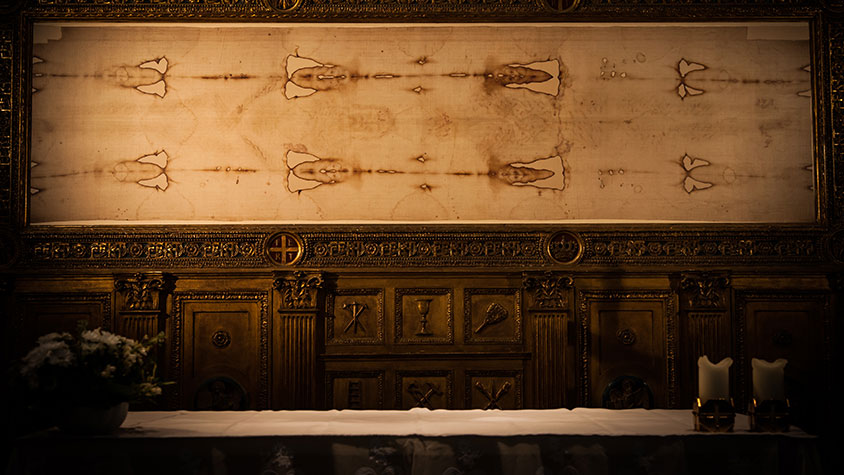It has fascinated and baffled scientists and scholars for centuries, yet the Shroud of Turin is considered a revered relic among many who believe it to be the burial cloth of Jesus.
According to legend, the shroud was spirited away from Judea around 30-33 AD and was hidden in Turkey and Constantinople (Istanbul) for centuries. Between the Fourth and Final Crusades, the shroud was smuggled to Greece. After settling in France for almost a century, it found its final home in Turin.
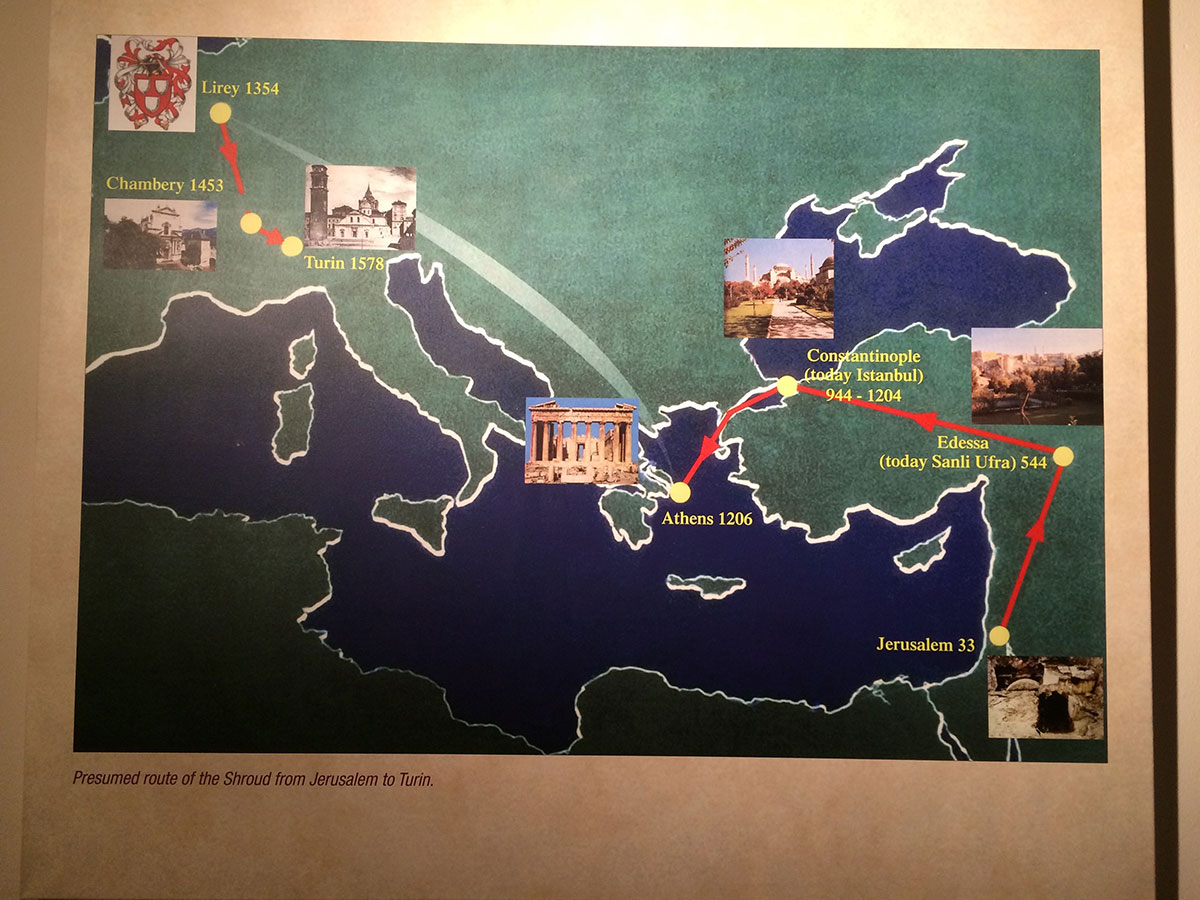
The original cloth, which bears the images of a crucified man, is housed in a shielded chapel inside the place of its namesake, the Cathedral of Turin in Italy. In its place are many replicas on display for public viewing. One such replica is located in permanent exhibition at the Pontifical Institute Notre Dame of Jerusalem Center. The exhibit presents studies and possible reconstructions of crucifixion and the use of the shroud.
The shroud, depicted here in photographic negative, bears the marks of a man who suffered injuries which parallel the account of Jesus’ own suffering and crucifixion in the Bible.

In the days of the Romans, a crown of thorns was made into the shape of a helmet—not a crown which only encircled the head. The shroud appears to show the crown of thorns was still upon the man’s head when wrapped.
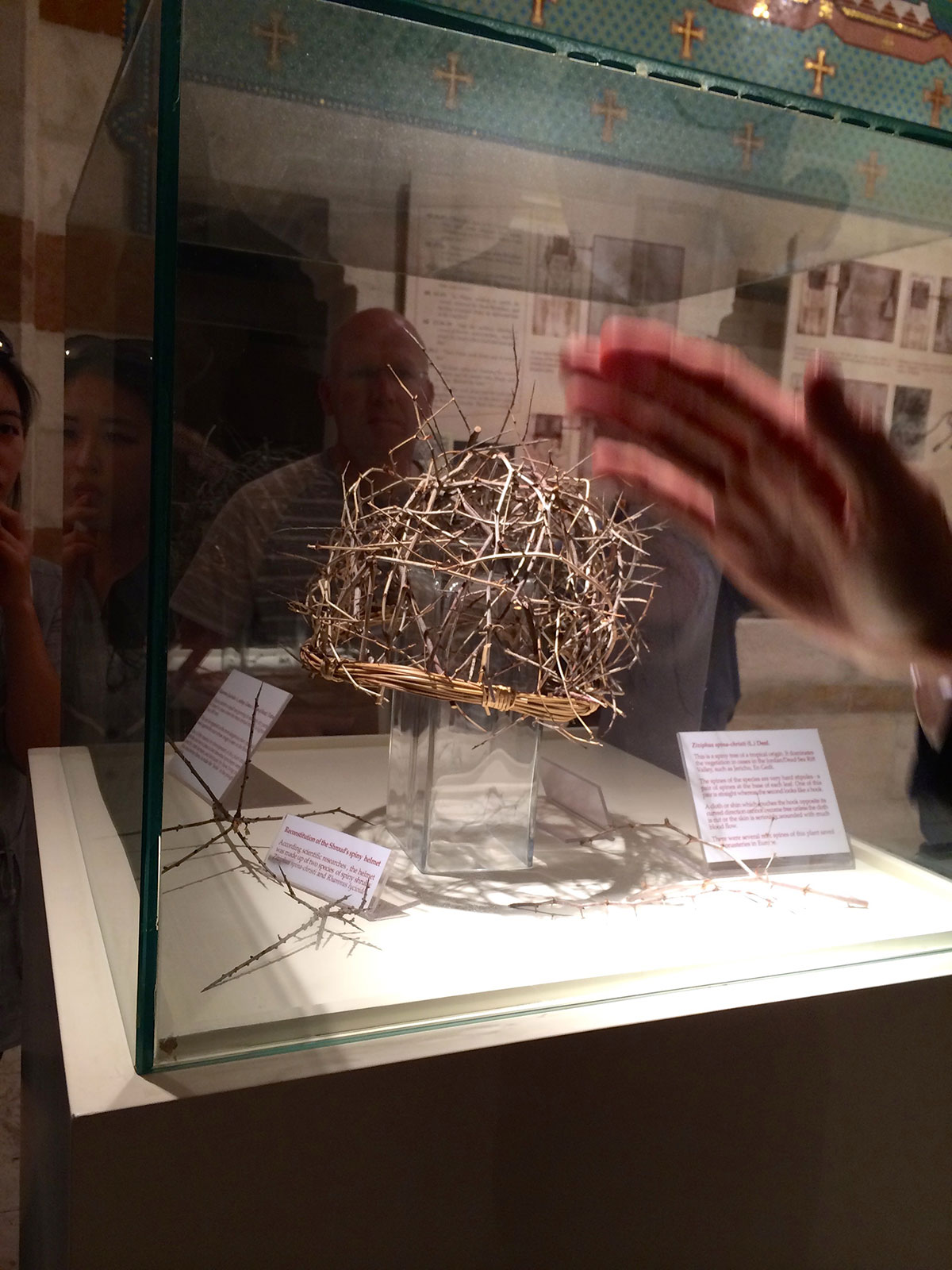
The scourges used to whip Roman prisoners, like Jesus, were intended to inflict great suffering. The tips at the end of the leather thongs were knotted with pieces of either bone or metal.

The nails used for crucifixion were approximately 6 inches in length.
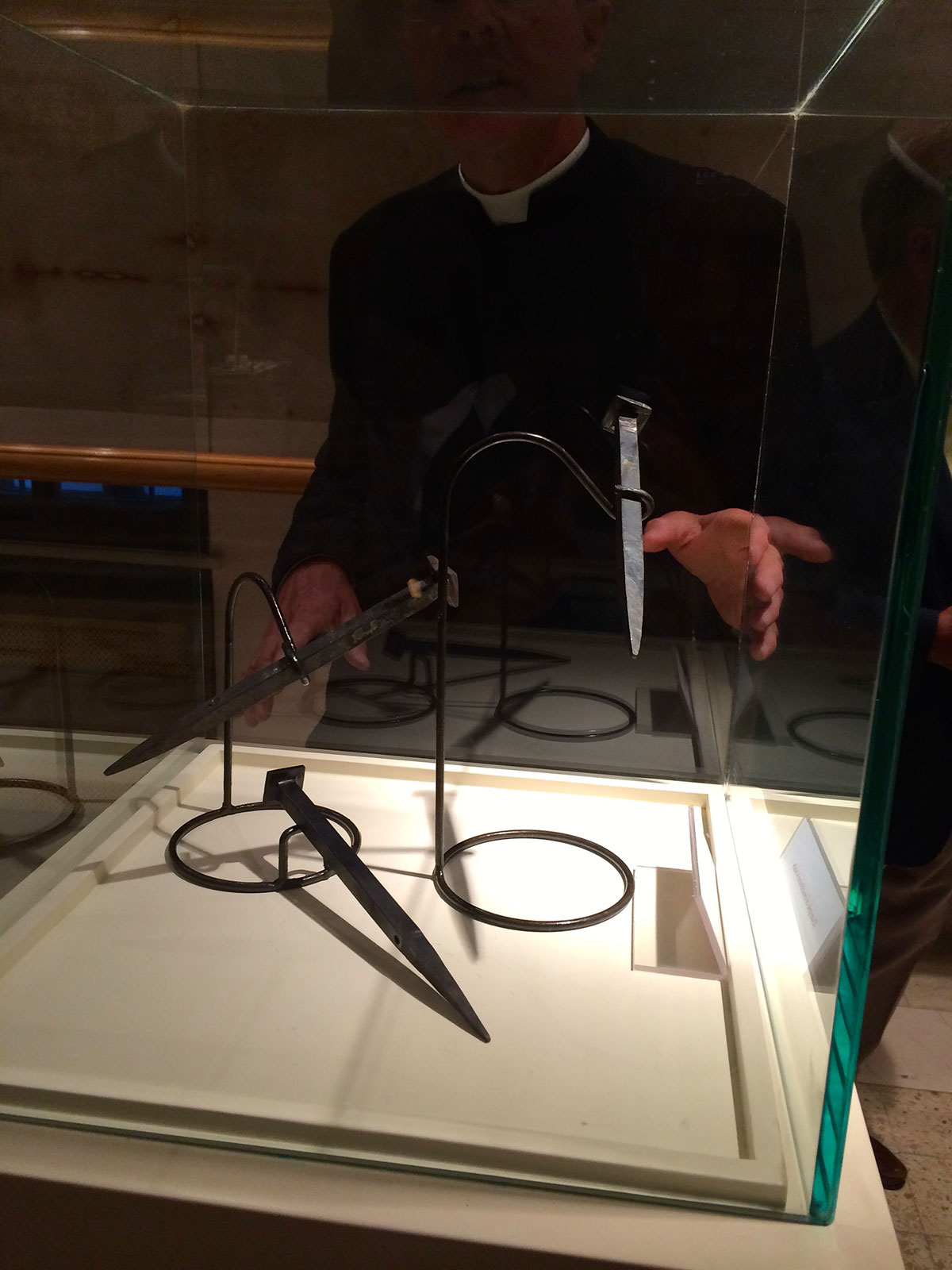
Three-dimensional imaging was used to construct a life-sized bronze statue of the man wrapped in the shroud.
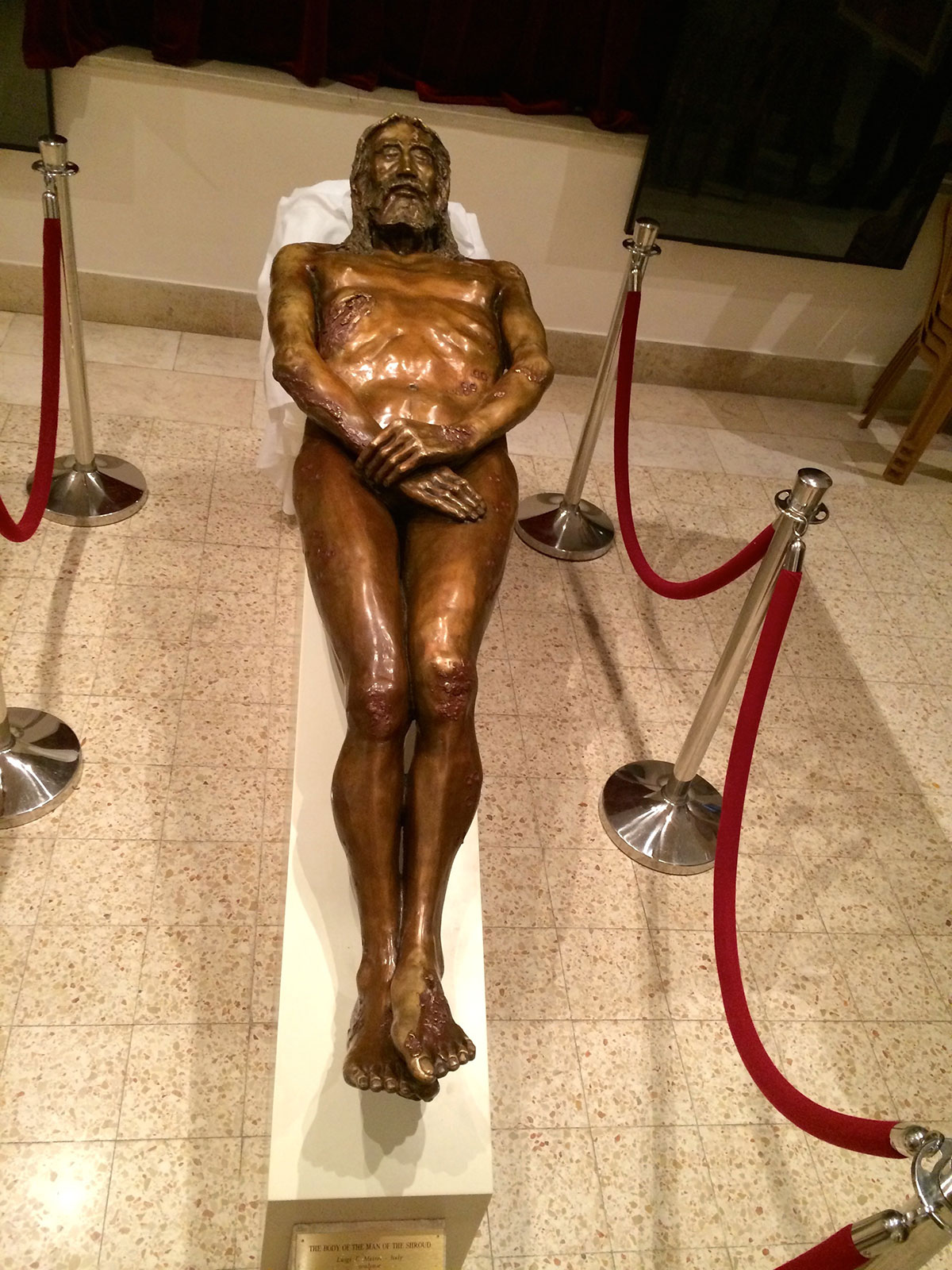
Even now, the identity of the mysterious image of the man in the shroud remains a sacred mystery. While its authenticity as the actual burial shroud of Jesus remains unverified, some might say it is better for it to remain so. The late Pope John Paul II perhaps said it best:
“What matters for the believer is that the shroud is a mirror of the Gospel. The image it presents has such a profound relationship with what the Gospels tell of Jesus’ passion and death that every sensitive person feels inwardly touched and moved at beholding it.”



